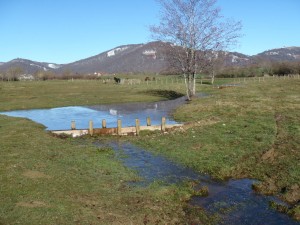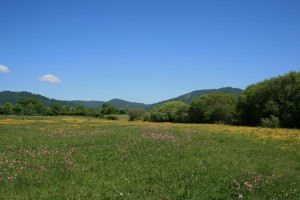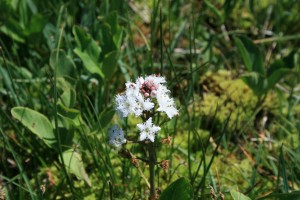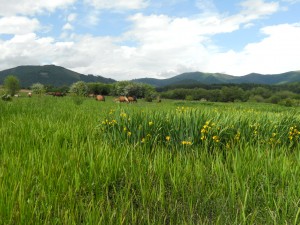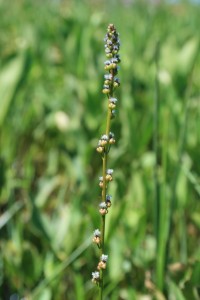Name of the site: Jauregiaroztegi
Protection categories: Listed as Protected Non-developable Land due to its Environmental Value, Wetlands, in Navarre’s Land Planning Programme 1 “Pyrenees”.
Location: Auritz-Burguete
Region: Navarre
Coordinate reference: 30TXN3660
Surface area of the wetland: 12 hectares
Altitude: 880 m
This site is a very gentle floodable depression, used as livestock pastures and meadows, surrounded by beech trees. It has three significant upwellings of water from the alluvium deposit that forms the plain.
Two distinct areas can be identified, one of which is longer and has a well developed mat of moss, fundamentally formed by Calliergonella cuspidata, Campylium stellatum and Palustriella falcata. The second area has two altered springs, providing a greater quantity of water than in the former area and more diversity in terms of plant communities.
- MOST IMPORTANT VALUES
Uniqueness
Jauregiaroztegi is the most basophilous site of all those studied.Biological and ecological values
In terms of vascular plants, the presence of Menyanthes trifoliata, Triglochin palustris and Sanguisorba officinalis is notable. The significant surface area occupied by reed beds and hydrophilic grasslands should be highlighted.Historical and paleoecological values
There is no peat deposit.Habitats of Community Interest
Hábitat Nombre 3260 Ríos, de pisos de planicie a montano con vegetación de Ranunculion fluitantis y de Callitricho-Batrachion 6410 Prados con molinias sobre sustratos calcáreos, turbosos o arcillo-limónicos (Molinion caeruleae) 6430 Megaforbios eutrofos hidrófilos de las orlas de llanura y de los pisos montano a alpino 6510 Prados pobres de siega de baja altitud (Alopecurus pratensis, Sanguisorba officinalis) 7140 «Mires» de transición 91E0* Bosques aluviales de Alnus glutinosa y Fraxinus excelsior (Alno- Padion, Alnion incanae, Salicion albae) Flora
As far as species specific to waterlogged areas in mire environments are concerned, the presence of Menyanthes trifoliata, with a major population of large examples, and Triglochin palustris, rather scarcer, is notable in Jauregiaroztegi .The presence of fairly rare species native to reed beds and hydrophilic grasslands is also noteworthy in Jauregiaroztegi; Sanguisorba officinalis is present in abundance and Centaurea nigra, Angelica major, Alopecurus geniculatus and Bidens cernua are present in smaller numbers.
106 species of vascular plant and just 5 bryophytes have been recorded; the absence of sphagnums is worthy of note, as is the fact that this is the only site at which Philonotis calcarea, a markedly basophilous species, has been found.
Fauna
The site is ideal for the proliferation of numerous insects, with an emphasis on Lepidoptera and Odonata, particularly Coenagrion mercuriale, listed in Annex II of the Habitats Directive. Due both to its location –in the area of the Atlantic migratory routes and very near to the important Lindus-Ibañeta mountain pass– and the diversity of habitats that it possesses, the site is ideal as a resting and feeding place for migratory birds, chiefly passerines.- PHOTOS



